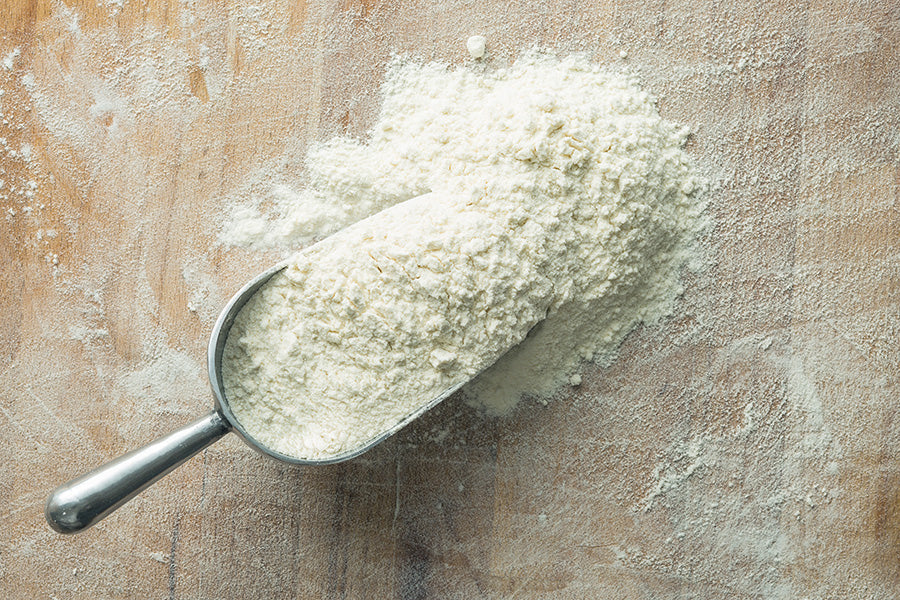
Resistant Starch: The Carbohydrate That Acts Like Fiber
An ally of intestinal health, metabolism and physical fitness
🍞 What is resistant starch?
Resistant starch is… a bit of a rebellious carbohydrate. Why? Because, unlike other starches (like wheat or corn), it resists digestion in the small intestine . And so it is not absorbed as a sugar, but behaves more like a soluble fiber .
Once it reaches the colon, it ferments thanks to the bacterial flora and provides a long series of benefits, both metabolic and intestinal. You can find it naturally in unripe bananas, cooled potatoes, legumes and whole grains , but today it is also possible to use it in an isolated and functional form in baked goods and low carb foods.
🧪 Types of Resistant Starch
Resistant starch is divided into 5 main types:
- RS1 – physically inaccessible (e.g. whole seeds, legumes)
- RS2 – present in raw starches (e.g. green banana, raw potato)
- RS3 – retrograde , i.e. formed when cooked starches are cooled
- RS4 – technologically modified , highly functional starch
- RS5 – lipid-bound starch (less common)
👉 In low carb products, RS3 or RS4 are mainly used, depending on the technology used.
🧬 Why is it good for you? The benefits of resistant starch
✅ 1. It is prebiotic
Just like inulin, resistant starch is fermented in the colon, where it feeds the good bacteria (especially bifidobacteria). The result? More intestinal balance, less bloating, more well-being.
✅ 2. Improves insulin sensitivity
Resistant starch is not converted into glucose , so it does not cause blood sugar spikes. In fact, clinical studies show that it improves insulin response, making it ideal for those on a ketogenic, low-carb or insulin-resistant diet .
✅ 3. Reduces calorie absorption
Because it is indigestible , resistant starch provides fewer calories (about 2 kcal/g) than other starches (4 kcal/g). This makes it perfect for those who want to lose weight or maintain their figure without giving up bread or pasta.
✅ 4. Supports gut health
Fermentation of resistant starch produces short-chain fatty acids (SCFA) , particularly butyrate , which is essential for:
- nourish the cells of the colon
- reduce intestinal inflammation
- improve nutrient absorption
❤️ Other benefits you don't expect
- Promotes satiety : thanks to the slower release of nutrients, it helps you feel full for longer.
- Improves digestion : acts like fiber, but without the irritating effects of insoluble fiber.
- Helps reduce cholesterol : some studies suggest a cholesterol-lowering effect, especially with RS3 and RS4.
👩🍳 How to use it in cooking (and in our products)
Resistant starch has an extra edge in the kitchen:
- It has no taste
- Resists high temperatures
- It can be used in doughs , creams , fresh pasta , baked goods
In Il Pane di Rivalta products, resistant starch (such as Lorystarch Elara ) is used for:
✅ Improve the structure of low carb doughs
✅ Maintain softness longer
✅ Reduce glycemic impact without sacrificing taste
💬 An artisanal baguette with only 3g of carbs and a fragrant crust? Yes, thanks to resistant starch (and a little baking magic).
📜 Is it safe?
Absolutely. Resistant starches used in food products are approved by EFSA , FDA and all major food safety agencies.
👉 They are GMO-free , well tolerated even in high quantities, and suitable for all ages (except for specific medical indications).
📈 A growing ingredient
In recent years, resistant starch has become a protagonist in the formulation of:
- Functional foods
- Healthy Snacks
- Glycemic control products
- Ketogenic and low carb lines
And it is increasingly in demand in the nutritional and clinical fields, for the support of metabolic and inflammatory pathologies.
✨ Bottom line: Little starch, big results
Resistant starch is a smart carbohydrate : it doesn't behave like sugar, it works like fiber, nourishes the intestines, protects the metabolism and improves the taste of baked goods.
Whether you’re looking for a lighter bread, a low-carb pasta that tastes like real pasta, or simply a way to eat better… resistant starch has you covered.
And in our products, it’s already at work – invisible but essential, like all smart ingredients.
